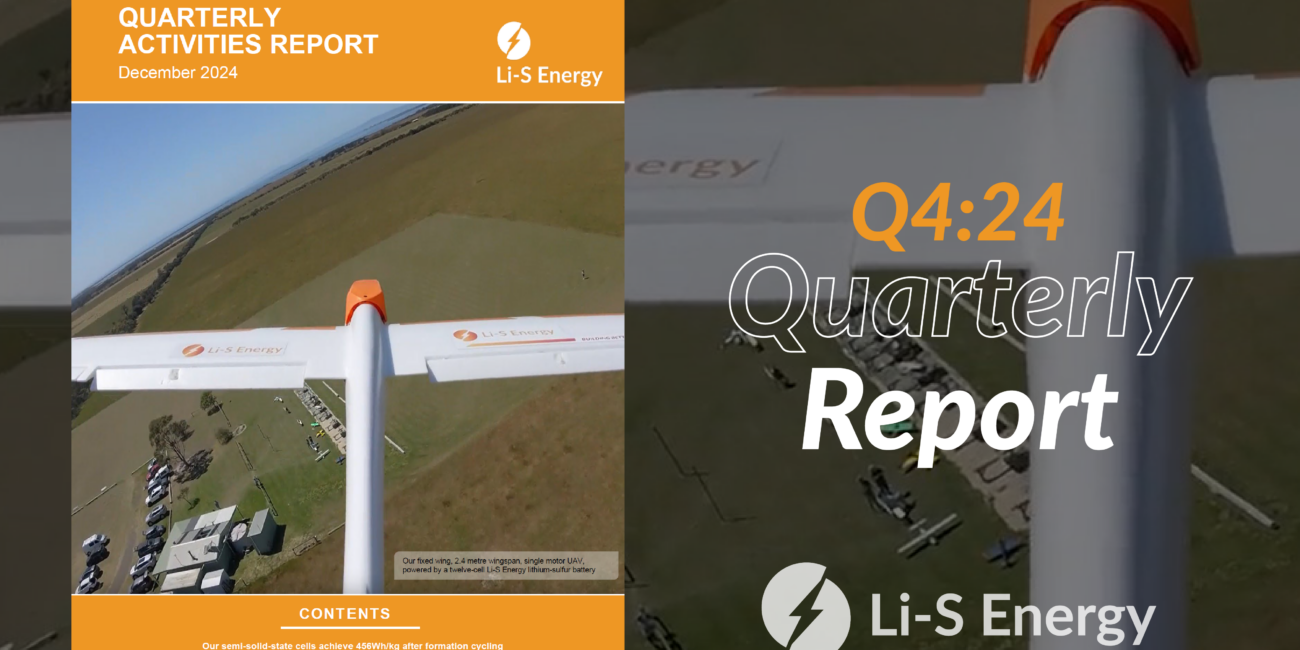The partnership aims to integrate Li-S Energy’s lightweight, high-energy-density batteries into Kea Aerospace’s solar-powered UAVs, which are designed for long-endurance missions in the stratosphere. These high-altitude UAVs have applications across environmental monitoring, communications, and defence.
This collaboration will focus on optimizing battery performance for extended flight durations and extreme atmospheric conditions. The move marks a significant step toward more sustainable and efficient aerial systems, with lithium-sulfur technology offering up to three times the energy density of conventional lithium-ion batteries.
This joint effort underscores the growing role of advanced battery technology in shaping the future of aviation and aerospace innovation.
 KEA’s solar-powered ‘ATMOS’ aircraft
KEA’s solar-powered ‘ATMOS’ aircraft
Kea High Altitude UAVs
Founded in New Zealand in 2018, Kea is currently flight-testing its aircraft in the stratosphere, between 55,000 and 65,000 feet. Its solar-powered Kea ‘ATMOS’ aircraft operates as a High-Altitude Platform Station (HAPS) and High-Altitude Long Endurance (HALE) aircraft. The drone gathers high resolution aerial imagery and persistent video data for applications such as maritime awareness, environmental monitoring and disaster response, plus a broad range of other commercial use cases such as supporting telecommunications services.
The potential for stratospheric HAPS aircraft capable of multi-month flight durations is substantial with Kea at the cutting edge of this global industry. The competitive benefits are compelling as HAPS offer far lower costs than satellites, greater persistence than conventional aircraft, and far greater control
compared to un-steerable balloons.
Li-S collaboration
Li-S’ collaboration with Kea will focus on incorporating the Company’s ultra light lithium sulfur battery cells and Li-S BMS technology into a Kea battery pack design, with ground testing expected in 2025 followed by flight testing.
The program objective will be to demonstrate the technology and integration in the 12.5 metre wingspan ATMOS Mk1 aircraft, followed by integration into the ATMOS Mk2 design, which will be capable of continuous flight for several months.
In ATMOS Mk2 the aircraft motors will cycle between power from the battery at night and solar cells during the day (with excess solar power also recharging the battery). Weight is absolutely critical for HAPS platforms. Having a battery with higher energy density prolongs flight time, improves payload capacity and can increase the geographic extent of operations, both in latitude and for operation in seasons with less daylight hours.
Dr Lee Finniear, CEO, commented:
“Our initial focus on the drone, defence and electric aviation markets is producing incredible opportunities for Li-S Energy. The stratospheric UAV market is a key sector of interest with enormous commercial potential. Partnering with Kea Aerospace positions us to engage at the cutting edge of this sector.
Given the paramount importance of weight and reliability to Kea’s ATMOS line of stratospheric UAVs, their decision to collaborate with Li-S highlights how far advanced our battery technology is ahead of many of our competitors. We look forward to the testing program being undertaken in 2025, and to becoming a key technology partner of Kea’s as it delivers high performance, multi-month HAPS aircraft platforms to the global market.”
Dr Mark Rocket, Kea’s CEO noted:
“Today’s announcement of our collaboration with Li-S at the Avalon International Airshow, one of the most prestigious airshows globally, speaks to how significantly we view our new partnership. Li-S’ next generation lithium sulfur battery offers more than twice the energy density of conventional lithium-ion batteries, while being greener due to the absence of key materials such as cobalt. This year promises to be a pivotal year for Kea as we develop our ATMOS Mk2 aircraft and the successful integration of Li-S battery technology into our ATMOS UAVs would give us an incredible competitive advantage in an industry where the commercial applications are vast.”



